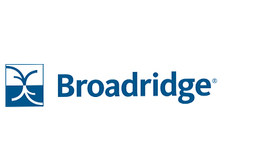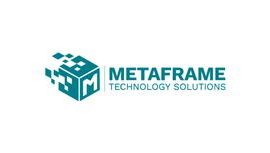Out of the shadows: With focus on independent NAV validation, how can alternative managers meet growing market and investor demands for transparency and auditability?
By Justin Hayes, Linedata Asset Management (UK)
Published: 20 September 2022
Transparency in fund management has never been more important, and this starts with fund operations. The independent calculation completed to verify the official valuation, or a ’shadow’ NAV (net asset value), is a fundamental part of this process.
Whether this requirement is coming from regulators around the globe or increasing investor demands, this independent valuation enables managers to meet the growing market pressure for transparency and auditability.
For alternative fund managers who use fund administrators to value their funds, this includes the validation of their performance fee reporting. In such cases, fund managers often want to perform a shadow NAV on the calculation provided by their administrator in order to validate the TPA’s (Third-Party Administrator’s) fund valuations and performance fee calculations. Additionally, this also answers the call for better, more detailed investor reporting, with additional granularity around share class and limited partner P&L (Profit and Loss) allocation for side pockets.
The calculation of a shadow NAV can be handled in multiple ways: insourced by the alternative fund itself, via the appointment of a second fund administrator, or outsourced to a services provider. Because of the increased scrutiny, more hedge funds and alternatives managers are looking to find ways to address this—and one of the ways that they are doing so is by bringing on more sophisticated systems within their own operations.
So, amid this sea change, what are the industry drivers impacting the uptake of these solutions? There are a few noteworthy market trends:
- Post-pandemic realities. The recent past has not only upended the traditional workforce and processes but also allowed both investors and fund managers to rethink and retool operations with an emphasis on better technology and efficiency. This includes the opportunity to incorporate software with richer capabilities.
- Improve the customer experience. Managers need to give investors’ a better perspective on performance that is closer to real-time, not just a monthly statement, in addition to more granularity. As both fund managers’ workforces and end investors’ get younger, the emphasis on bespoke and improved client experiences that both Millennials and Gen Z’s value cannot be overstated.
- More detailed, in-depth reporting. Fund administrators also want to build out more detailed reporting for end investors. Twenty years ago, reporting on an opening and closing balance may have been enough, but in this market, fund managers need to be more responsive to investor needs. That is a reason why fund administrators have taken over that role, to both give them that expertise and provide these really specific reports per investor. This is because each investor will have different performance, and HNWIs (high-net-worth individuals) especially want that granularity. The ability to provide this level of reporting is seen as a competitive advantage and differentiator.
- Regulatory environment and more. For some time now, regulations from the US SEC (Securities and Exchange Commission) and Europe’s AIFMD (Alternative Investment Fund Managers Directive) have dictated that hedge funds must have third-party independent valuation by the fund administrator. But it is not due to regulators alone, as managers themselves want to ensure the fund administrator is accurate.
So, who can benefit from adopting these solutions? The big winners stand to be alternative managers with portfolio management system software looking to price at share class and limited partner levels. This enables performance fee calculations at both levels and can automate what might have previously been manual tasks, freeing up workforces. Additionally, there is the possibility that these tasks to calculate a shadow NAV will provide greater transparency and information about their investors. This is becoming more relevant as investors increasingly want to have a closer relationship with their managers.
Why now? Market turmoil meet transparency
Certain portfolio management system software may not give the full workflow to the investor level, and some of the valuation and fee calculation will possibly be done offline. This is true, particularly around fees, which can be complex and need to be calculated at the investor level. Investor demands require greater transparency due to the recent history of market turmoil.
Alternative asset managers need to have that information readily available, in addition to being able to address a myriad of other pain points:
- HNWI expectations. Fund managers often lack the systems and reporting to provide granularity around performance that is expected by clients, especially for HNWI.
- Share class/ limited partner (LP) levels. Alternative funds want to shadow the fund administrator, but this can be cumbersome with daily funds, especially if they need to drill down to share class. Transfer agency systems can enable them to truly shadow the TPA at these levels while maintaining an audit trail that is part of an automated workflow, not a manual process.
-
Manual processes. Alternative fund managers needing shadow NAV and performance fee calculation also need a fully auditable, automated tool or mirror administration that provides a certain level of comfort. This includes moving away from these error-prone manual processes to automated workflows with audited work. Additionally, there should be no offline calculation of performance fees.
-
Client reporting. Alternative fund managers need the ability to provide better client reporting—from the investor level to performance fee, all while providing more granularity and full transparency.
-
Performance fees. Many portfolio management systems do not have investor information, so a transfer agency or investor platform can enable managers to calculate fees at the investor level.
Enter solutions
One way to help firms solve this is by combining solutions such as Linedata’s Mshare allocations along with a portfolio management system like Linedata Global Hedge (LGH). Together solutions like these can enable managers to meet growing market and investor requirements for transparency and auditability in their in-house operations.
For example, if a fund shadows its administrator, Mshare allocations provides highly accurate data and valuations without the headache of spreadsheets or other workarounds. It can take the P&L from an administrator’s accounting platform and integrate it with a firm’s portfolio management system to perform complex side pocket and investor equalisation calculations and series of shares accounting with ease.
Together with Linedata Global Hedge, Mshare can provide an end-to-end solution for alternative funds wishing to perform their own shadow accounting. While portfolio management systems provide the fund level NAV, Mshare can work with LGH or another system.
Additionally, fund managers should look for solutions that, like Mshare, provide share class level and partnership level investor accounting via their allocations module. This can deliver streamlined solutions for hedge fund investors that want daily P&L but would have previously required lengthy, manual spreadsheet competitions. Without it, these can involve onerous amounts of work, be prone to manual errors, and, in the end, only manage a handful of share classes. Mshare can also include performance fee calculation.
True transparency and NAV validation
The value to alternative managers of an in-house system that efficiently produces accurate NAV validation along with the right level of investor reporting became even more apparent as the pandemic developed, when firms’ realised what had to be done to advance and streamline these processes. In other words, with regulators and investors exerting more pressure, the time of the spreadsheet has passed because manual processes and lack of transparency are a risk in 2022 and beyond.
These are steps alternative fund managers can take to provide a clear-eyed view of NAV validation and investor level reporting, especially for those looking to price at share class level and partnership level; enable performance fee calculations; and move away from manual processes, all while increasing the level of client reporting.









